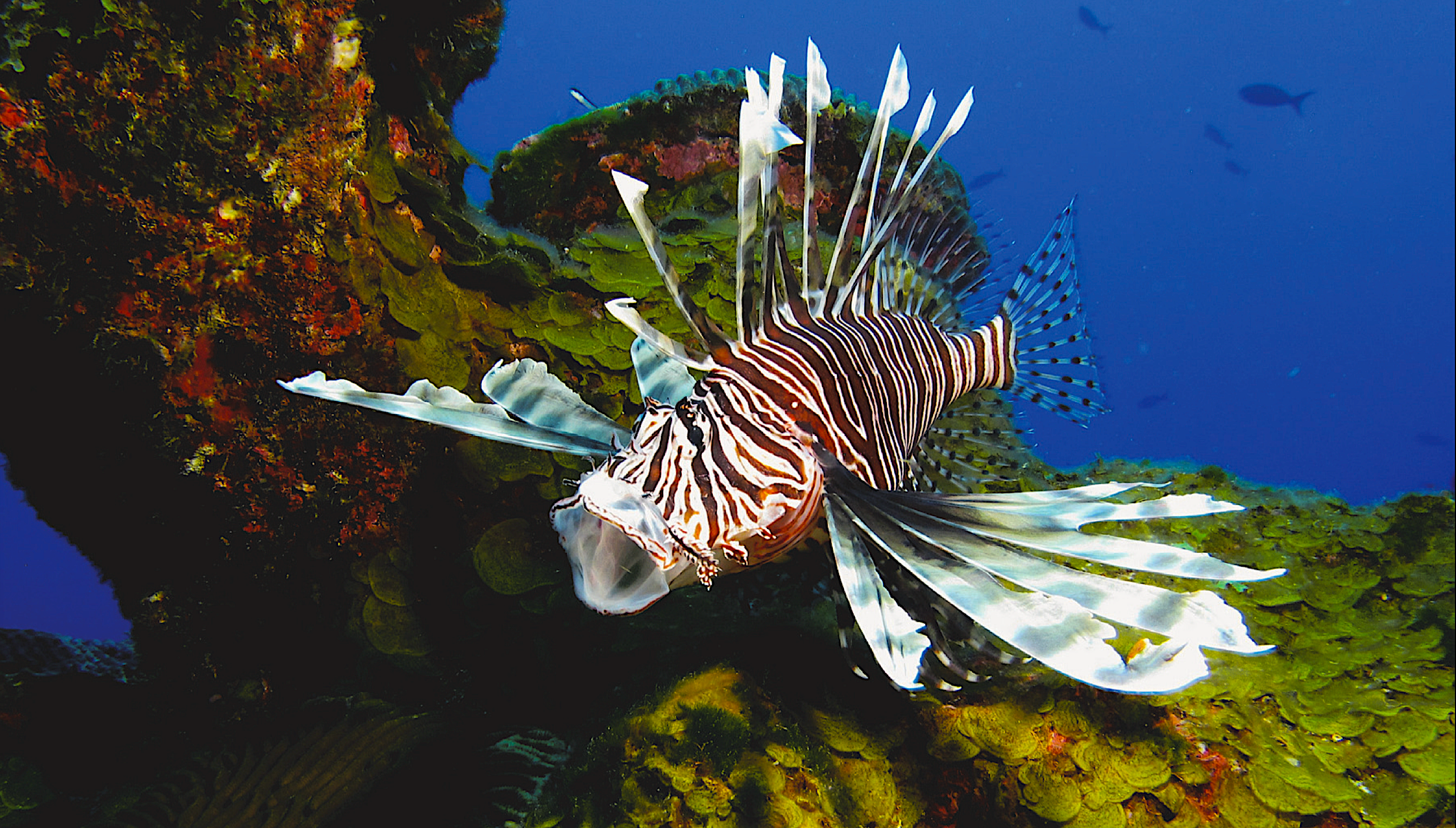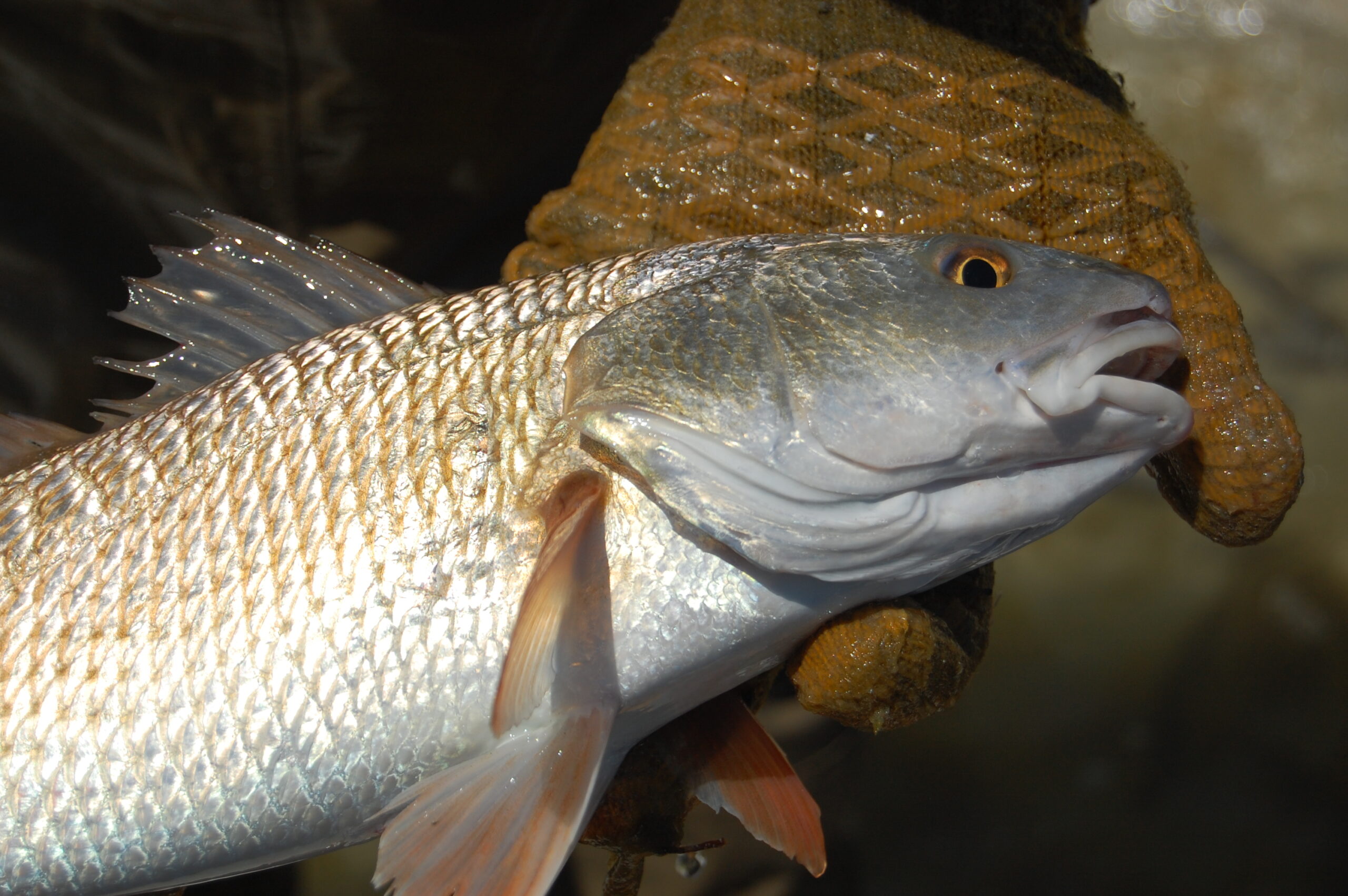Have lionfish numbers peaked on the East Coast?

A long-term study reveals unexpected trends.
Research Need
Newly arriving species can harm ecosystems by out-competing native species for resources. Lionfish species, native to the Indo-Pacific region, were first spotted in North America in 1985 around Miami. Since then, their range has grown to stretch from Miami to Cape Hatteras. There have been many studies documenting the scope of the lionfish arrival, but few studies that have looked at the population trends over a decade.
What did they study?
In 2011, the Southeast Reef Fish Survey (SERFS) collaborated with the Marine Resources Monitoring Assessment and Prediction (MARMAP) Program to add video cameras to a series of monitoring traps spanning the East Coast.
MARMAP already had been trapping fish since 1990. Because lionfish were present in the region, but infrequently trapped, the scientists thought that videos might provide a better estimate of the true lionfish population distribution.
In addition to the videos, the team gathered data from 2011 to 2021 that included location, temperature, and depth of capture. The team also observed the habitat features that lionfish preferred.
What did they find?
From 2011 to 2021, 12,810 chevron trap deployments off the Southeast coast averaged 1,281 collections per year. Lionfish were present in about 13.5% of videos.
In the longer running MARMAP series from 1990 to 2021, however, they only caught 77 lionfish in 24,674 traps.
Most sightings occurred off the coasts of South Carolina and Georgia. Interestingly, the range of lionfish did not shift northward or southward.
Lionfish were most commonly sighted in clear water at a depth range of 130 to 165 feet and in habitats that were at least half covered with other underwater life.
Over the 11-year span, lionfish populations increased from 2011 until 2015, leveled off around 2015 to 2017, and decreased until the survey ended in 2021.
Given that targeted lionfish harvest is limited in the study area, the 2017-2021 decline is likely due to natural factors, such as the density of lionfish that their preferred habitats can support. These habitats can only sustain a certain level of fish species (including lionfish), at any one time. Exceeding this capacity often results in competition between top-level species, which can lead to slower individual growth.
What else did they find?
Scientists have long thought that temperature drives the distribution of lionfish, which is consistent with this study’s findings. Lionfish appeared more often in warm offshore waters, with warmer bottom temperatures correlating with denser populations. This may mean further arrivals of lionfish as waters continue to warm with climate change in coming years.
So what?
Understanding the long-term population dynamics of species can give researchers insight into how to better help and advocate for the environments in which the species live. This is particularly important for arriving species like lionfish as they have potential to completely disrupt ecosystems. Understanding how the lionfish population has changed over time will help researchers to better predict how it will continue to change and how they can best intervene.
Reading
Finch, Margaret, et al. “Tracking an invasion: How the distribution and abundance of lionfish (pterois spp.) has changed along the U.S. Atlantic Coast.” Biological Invasions, vol. 26, no. 5, 16 Mar. 2024, pp. 1669–1683, https://doi.org/10.1007/s10530-024-03248-y.
Lead photo credit: NOAA.
The text from Hook, Line & Science is available to reprint and republish at no cost, but only in its entirety and with this attribution: Hook, Line & Science, courtesy of Scott Baker and Sara Mirabilio, North Carolina Sea Grant.




